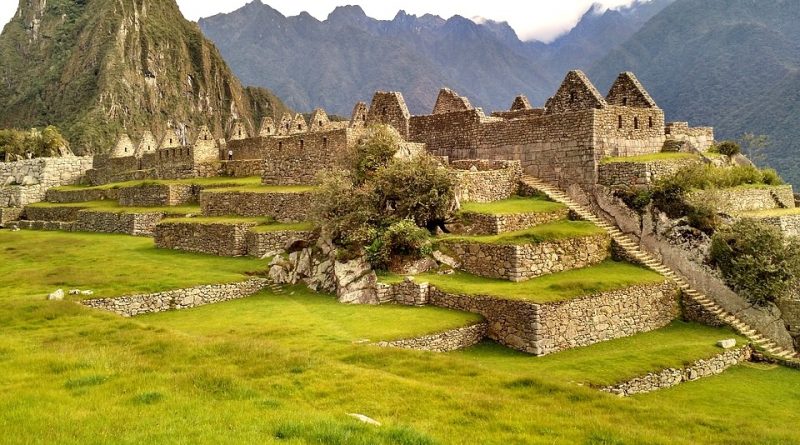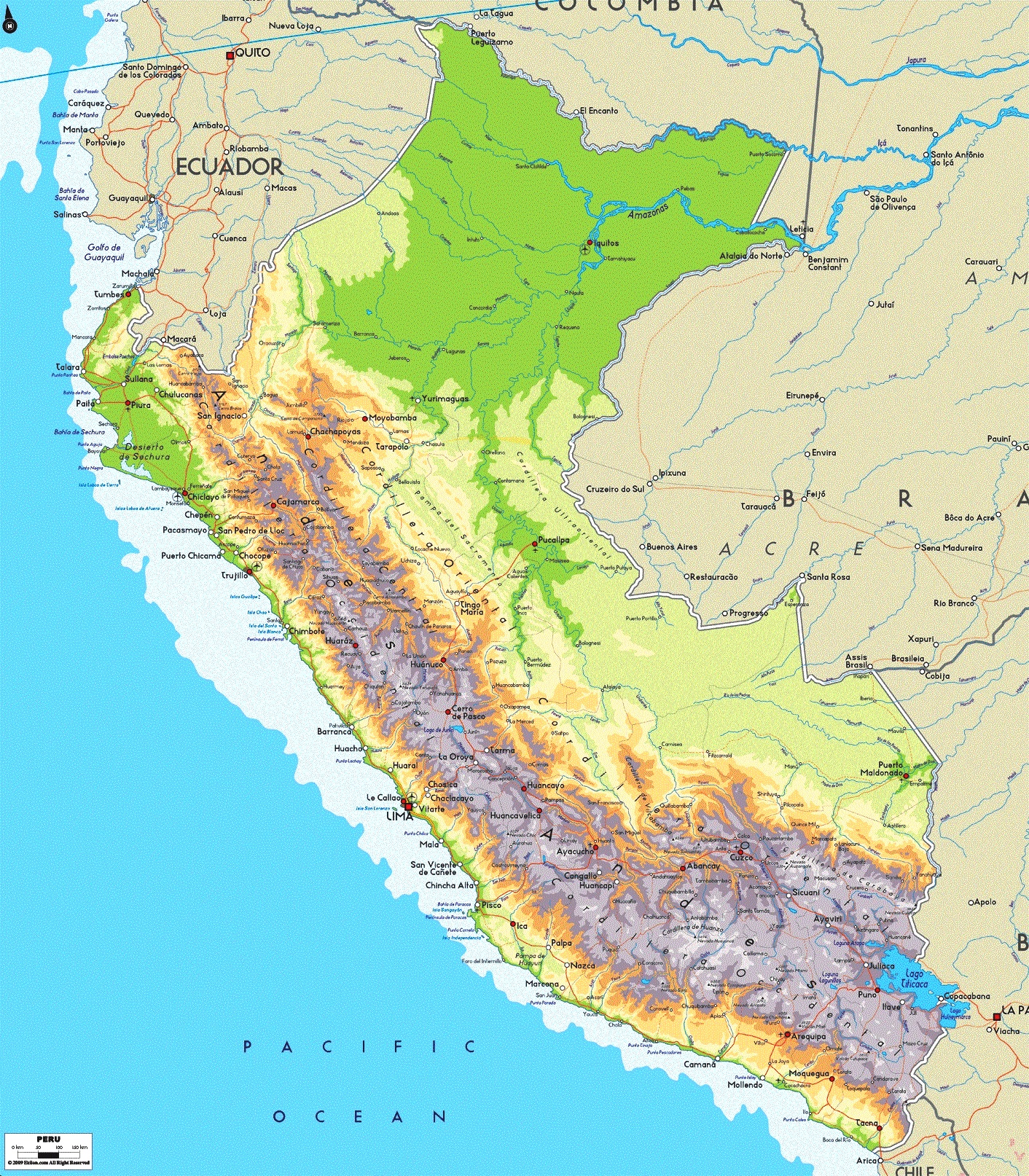Geographic map of Peru
Geographic map of Peru
Peru is a territory and state of South America that borders to the north with Ecuador and Colombia, to the east with Brazil, to the southeast with Bolivia, to the south with Chile, and to the west with the Pacific Ocean. Peru, with an area of 1,285,216 km², is the third largest country in South America (after Brazil and Argentina).
The areas of the Peruvian territory are home to ancient cultures, ranging from the Caral civilization, one of the oldest in the world, to the Inca Empire which was the largest pre-Columbian state in America.
With the advent of the first post-Colombian settlers and the Spanish Empire, which conquered the region in the 16th century, establishing a Viceroy there, Peru remained under this domination until its independence in 1821, and the definitive end of Spanish rule over the region was signed in the battle of Ayacucho three years later.
Today, Peru is a representative democratic presidential republic divided into 25 administrative regions.
Peru is characterized by a very variable geography ranging from the arid plains of the Pacific coast, to the peaks of the Andes and to the tropical forests of the Amazon basin.
The main language spoken is Spanish, although a significant number of Peruvians speak Quechua or other native languages, such as Aymara.
Peru contains 3.7% of the planet’s total fresh water. There are three major river basins; the basin of the Amazon River, which flows east of the Andes, the Pacific basin, where rivers flowing from the Cordillera flow west to the Pacific, and the basin of Lake Titicaca, on the border with Bolivia. Titicaca is the second largest lake in South America, as well as the highest navigable lake in the world (3800 m asl).
In Peru the presence of the high Andean mountains and the Humboldt current determine a great climatic diversity among the different regions. The coast, up to 2000 m, has an arid subtropical climate, with temperatures influenced by ocean currents; despite the tropical latitude, in fact, on the coast often blow the Antarctic winds of the Humboldt current, dry and cold, which determines an almost absence of rain on the coast and a temperature more from temperate zone than from tropical zone, with values included between 20 and 27 degrees and rainfall less than 200 mm per year. Sometimes El Niño carries warmer and wetter currents, especially in the northern part of the coast.
Moreover, in the sierra over 1000 m. the climate is temperate with temperatures that are around 20 degrees and precipitation between 500 and 1200 mm per year. Above 3000 m the temperatures are lowered further approaching 0 ° C.
In the Amazon area, on the other hand, the climate is generally warmer and more rainy, with temperatures between 25 and 30 ° C and rainfall constantly around 2000 mm per year.
As far as ecology is concerned, the most important habitats of Peru are represented by the forests of shrubs and mountain grasslands (paramos in the north, punas in the center and in the south), the nebular forests, rain forests and the desert.
Flora –
The flora of Peru is linked to the great variability of the habitats present: in fact, it passes from the Amazon forest to the landscape of the Andes; for this reason, also the animal and plant species present in the territory are very varied. In the Amazon forest you can find tropical plants (including several species of orchids). Cacti and other succulents are typical of the desert.
Fauna –
Also the fauna of Peru is affected not only by the great ecological variability of the areas but also by the great differences in altitude and morphological and hydrographic conditions of this country.
According to some estimates, there are about 400 species of mammals in Peru, 1,700 of birds, 500 of reptiles and amphibians and about 2,000 of fish. The Inca worshiped 3 animals that are still present in the area: the jaguar, the condor and the snake. In the Peruvian Amazon rainforest you can find species of animals such as the giant anteater, the caiman, various species of snakes including the poisonous variety nakanaka and numerous species of boas, the tapir, the tarantula, the otter, the sloth and several species of monkeys; variety of squirrels and rodents, including the capybara, the largest rodent in the world; numerous species of bats, bees and parrots.
In the Peruvian coast we find instead of sea lions and in the ocean also seals and whales; numerous species of birds such as pelicans, cormorants and the fish eagle. Many species of insects and arachnids live in the desert like the fearsome scorpion.
Proceeding north the coast can be divided into three zones: deserts, depressions and pampas and river and fertile valleys; here you can find the fox, the deer, numerous species of birds, owls and barn owls. In the Peruvian Andes, the most famous animals are the llamas, alpacas and vicuna, important for the wool trade.
Guido Bissanti


